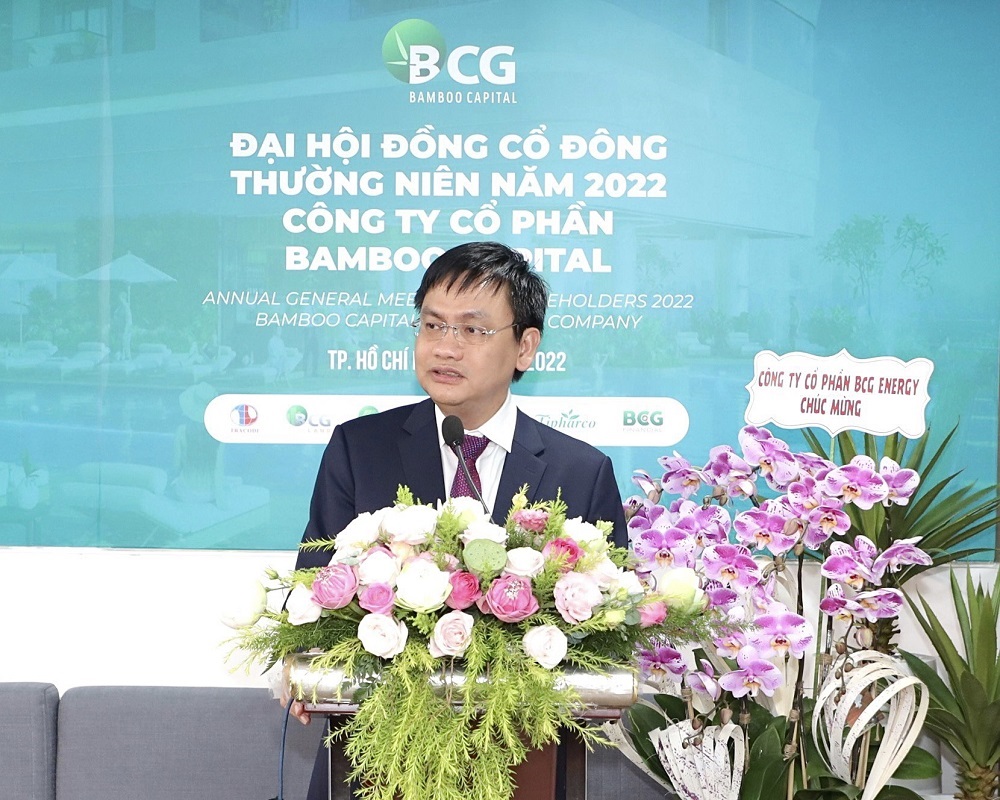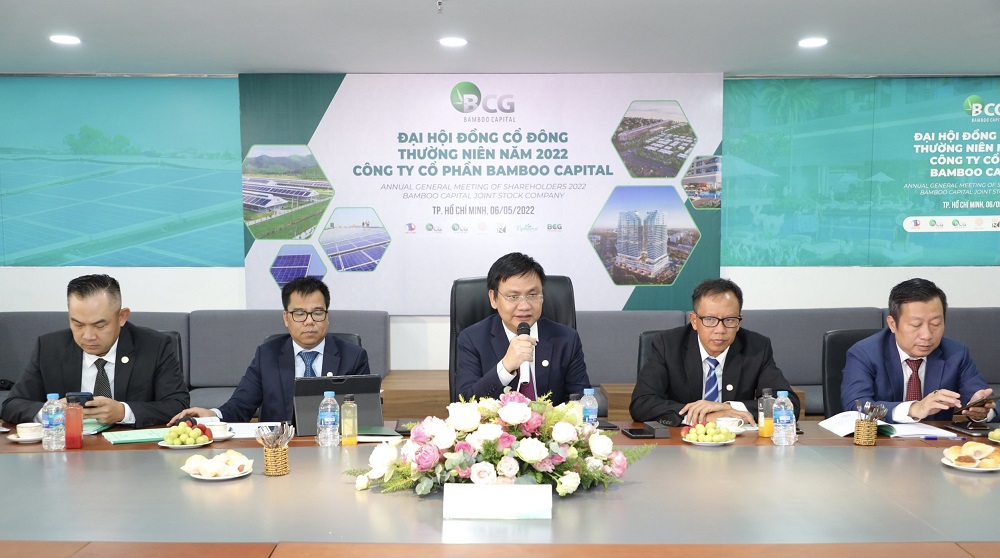On May 6, the General Meeting of Shareholders of Bamboo Capital Joint Stock Company (HoSE: BCG) decided to change the business name to Bamboo Capital Group Joint Stock Company.

Goals for 2026 include profit of VND 10,000 billion , owner's equity of VND 56,000 billion
This year, BCG sets a planned revenue of VND 7,250 billion, an increase of 280% compared to 2021's. Profit after tax is expected to reach VND 2,200 billion, an increase of 220%.
BCG plans to raise capital by issuing more than 266 million shares to existing shareholders at a ratio of 2:1 at the price of 10,000 VND/share. The AGM also approved the resolution to sell 250 million shares to the public by putting up for auction, the starting price is at least 70% of the average of 60 consecutive trading days on the market up to the decision day.
Dividends in 2021 are 10%, including 5% cash and 5% shares. The total value of BCG shares expected to be issued this year is VND 5,183 billion at par value, including 25.3 million dividend shares and 5 million shares from ESOP. If the issuance is a success, Bamboo Capital's charter capital will double from VND 5,033 billion to about VND 10,500 billion.
After the issuance, the corporation will contribute VND 5,000 billion to BCG Financial to increase AAA Insurance Joint Stock Company' capital, to expand in the non-life insurance market, which is highly profitable.
Through BCG Financial, BCG invests in the fintech segment of Bamboo ID Company to develop digital banking applications, it also makes long-term investments in banking industry and M&A in the financial sector.
BCG expects to increase equity by 2022 to VND 29,000 billion; 2023, VND 36,000 billion; 2024, VND 41,000 billion; 2025, VND 47,000 billion; and 2026, VND 56,000 billion. By 2026, the corporation's total assets is forecasted to be approximately VND 185,000 billion. In the near future, the company prefers to increase equity by retaining profits rather than new shares.
Large receivables are future sales and assets
BCG currently has a high level of receivables, both long-term and short-term, which worries some shareholders. Their concern is bad debt risk can lead to a liquidity crisis, causing the company to make higher provisioning. However, Mr. Nguyen Ho Nam, Chairman of BCG said that BCG's receivables is not worrying because high receivables are its nature business. Most of BCG's receivables come from 3 segments: Real estate, construction and M&A.

Regarding real estate, the value of BCG Land's projects is very high, but according to accounting principles, revenue is recognized only after project handover and receiving full payment. The corporation has many projects, some of them are still under construction, so after completing, if customers don't want to purchase, they can go into liquidation and sell the apartments to other customers, BCG doesn't have to worry about bad debt or liquidity risk.
In the construction sector, when implementing large-scale projects, especially renewable energy ones, the general contractor usually has to advance 30-40%, so the cost must be considered as a receivable. When the project is completed and put into operation, this receivable will be converted into the company's assets.
Similarly, the third segment has large receivables is M&A. When purchasing projects, BCG takes ownership, but only pays 50-70% of the cost and waits for the partners to complete legal process before paying the rest. After that, these receivables will become the corporation's assets.
Tightening control on the bond market has no impact on BCG
According to Mr. Nguyen Ho Nam - Chairman of BCG: "The principle of financial management is not looking at the absolute number of debt, but considering whether the financial structure is optimal or not. BCG's debt (bonds) is about VND 9,000 billion, but total assets are over VND 40 trillion, equity is more than 8,000 billion, this is a low-risk financial structure.

In addition, last year, BCG's financial structure was improved. The debt-to-equity ratio, by the end of the first quarter of 2022, had decreased to 2.72 times. This year, the corporation plans to reduce this ratio to less than 2 and then to under 1 in the near future.
Mr. Nam also emphasized that Vietnam is a developing economy, so it is essential to develop a solid foundation for a stable and healthy financial market, which include money market and capital market. The money market relies on banks. Stocks and bonds on the other hand are key instruments to mobilize capital. Recently, lack of legal stability has led to cases of "one rotten apple spoils the barrel", the next thing to do is not to tighten or "destroy" the bond market, but to develop a legal framework for a healthier and safer capital markets development in order to support businesses.
BCG leaders said that 90% of the capital from bonds has been used for green energy and real estate projects, which are very potential. The bond repayment plan is feasible. BCG always hires professional services to ensure compliance. Therefore, the tightening control on real estate bonds has no impact on BCG.